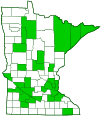Pin-cushion Sunburst Lichen
(Polycauliona polycarpa)
Conservation • Description • Ecology • Distribution • Taxonomy
Conservation Status |
|
|||||||
| IUCN Red List | not listed |
|||||||
| NatureServe | NNR - Unranked |
|||||||
| Minnesota | not listed |
|||||||
Description |
||
Pin-cushion Sunburst Lichen is common across North America and Europe. It is found in humid microclimates on bark, usually on twigs. The vegetative body (thallus) is leaf-like (foliose) and divided into small branches (lobes). It forms colonies up to 1¼″ in diameter or larger. It grows tightly attached to the substrate (bark) but does not have root-like structures (rhizines). The lobes are flat to convex and 1 ⁄64″ to 1 ⁄32″ (1.2 to 0.7 mm) wide. The upper surface is yellow to bright orange and smooth, sometimes somewhat shiny. It does not produce powdery dull granules (soredia) or shiny granules (isidia). There are also tiny, globular chambers (pycnidia) embedded in the thallus with an opening through which fungal spores are released. The pycnidia are inconspicuous and difficult to see because they are the same color as the thallus or only slightly darker. The lower surface of the thallus is white and somewhat wrinkled. It has scattered, short, peg-like structures (hapters) attaching the thallus to the substrate. Disk-like, spore-producing structures (apothecia) are extremely abundant, sometimes covering the entire thallus. The disks are stalked, orange, up to 3 ⁄16″ (4.5 mm) in diameter, and shaped like a plate. They are usually smooth but sometimes wrinkled. Each disk has a ring of tissue around it that resembles the tissue of the thallus. |
||
Similar Species |
||
| On bark. Humid. | ||
Ecology |
||
Substrate |
||
Trees |
||
Growth Form |
||
Foliose |
||
Habitat |
||
|
||
Hosts |
||
|
||
Distribution |
||||
|
Sources |
|||
| 2/2/2023 | ||||
Occurrence |
||||
Common |
||||
Taxonomy |
|||
| Kingdom | Fungi (fungi) | ||
| Subkingdom | Dikarya | ||
| Phylum | Ascomycota (sac fungi) | ||
| Subphylum | Pezizomycotina (sac fungi amd lichens) | ||
| Class | Lecanoromycetes (common lichens) | ||
| Subclass | Lecanoromycetidae (shield lichens, sunburst lichens, rosette lichens, and allies) | ||
| Order | Teloschistales (sunburst lichens and allies) | ||
| Suborder | Teloschistineae | ||
| Family | Teloschistaceae (sunburst lichens, firedots, and allies) | ||
| Subfamily | Xanthorioideae | ||
| Genus | Polycauliona | ||
| Mycobiont | Polycauliona polycarpa | ||
| Photobiont | |||
This species was formerly classified as Xanthoria polycarpa. In 2013 it was moved to the genus Polycauliona. Most print and online sources still use the old name. |
|||
Synonyms |
|||
Lecanora candelaria var. polycarpa Teloschistes polycarpus Xanthoria polycarpa |
|||
Common Names |
|||
Orange Lichen Orange Wall Lichen Pin-cushion Sunburst Lichen Pincushion Sunburst Lichen |
|||
Glossary
Apothecium
An open, disk-shaped or cup-shaped, reproductive structure, with spore sacs on the upper surface, that produces spores for the fungal partner of a lichen. Plural: apothecia.
Foliose
Adjective: Leaf-like growth form; referring to lichens with leaf-like growths divided into lobes.
Noun: The leaf-like, vegetative body of a lichen (thallus) that has thin, flat lobes which are free from the substrate.
Rhizine
A root-like structure of a lichen that attaches the lower layer to the substrate.
Thallus
The vegetative body of a lichen composed of both the alga and the fungus.
Visitor Photos |
|||||
Share your photo of this fungus. |
|||||
| This button not working for you? Simply email us at info@MinnesotaSeasons.com. Attach one or more photos and, if you like, a caption. |
|||||
Alfredo Colon |
|||||
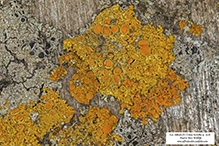 |
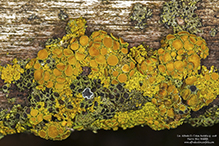 |
||||
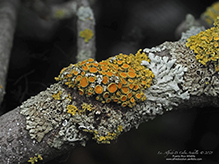 |
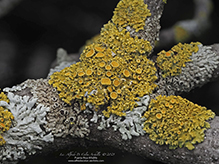 |
||||
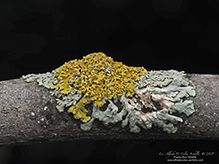 |
|||||
MinnesotaSeasons.com Photos |
|||||
|
|||||

Slideshows |
||

Visitor Videos |
|||
Share your video of this mammal. |
|||
| This button not working for you? Simply email us at info@MinnesotaSeasons.com. Attach a video, a YouTube link, or a cloud storage link. |
|||
Other Videos |
|||


Created: 5/13/2019
Last Updated:
